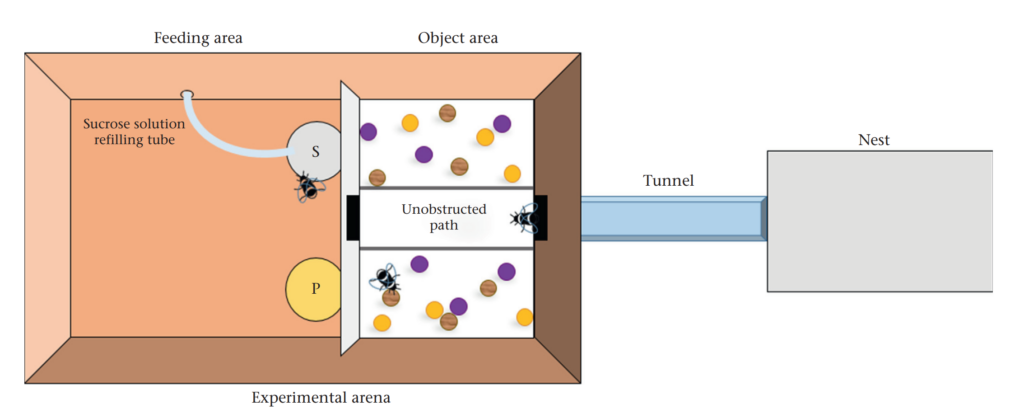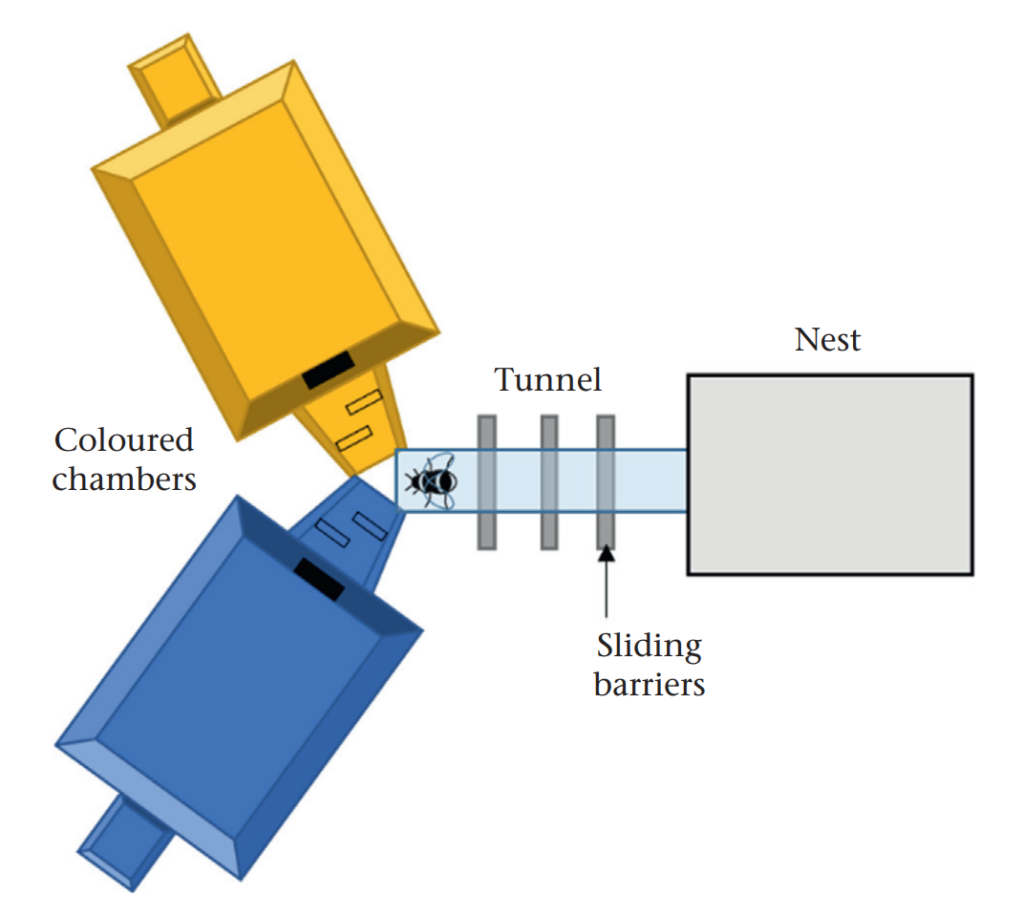Throwing a ball, chasing it or just pushing it around – it’s fun for humans, dogs and cats. Object play is common among mammals, especially young ones. But did you know that bumblebees also play with balls?
I wrote before about bumblebees that learned to roll balls to get a reward. Researchers that performed that study noticed that the insects often performed the activity even if there was no reward present or even “wasted” time on it on their way to and from the food.
Therefore, these scientists wanted to check if bumblebees who had never been rewarded for rolling a ball would still do so, and how sex and age affect this behaviour.
To roll or not to roll?
To answer their questions, researchers conducted a set of experiments in which bumblebees had free access to small wooden balls (some movable and some glued to the spot) in the area between their nest and feeding space (see Figure 1 below). However, a direct route between these two locations was free of the “toys”. Therefore, the bumblebees had easy access to the balls but did not need to interact with them at all.

Most bumblebees rolled balls multiple times during the experiment. One even spent half a minute rolling a single ball over a total distance of 60cm. Once a bumblebee discovered that some balls can be rolled, it usually spent more time in the area with movable balls and interacted with them more than with immobile balls. Young bumblebees rolled balls more than older ones – a typical pattern for play behaviour.
Is it fun?
To further test if the insects found ball rolling rewarding in and of itself, researchers performed a new set of experiments. In the training stage, they exposed inexperienced bumblebees to two conditions: on the way from the nest to the feeding area they had to move via chambers of different colours. In one of them, there were balls that could be rolled, and the other one was empty (see Figure 2).

After experiencing both chambers multiple times, researchers put the bumblebees to the test. This time insects could choose one of the chambers based on colour, without seeing if balls were inside or not (Figure 3). Bumblebees showed a clear preference for the chamber that previously contained balls. This supports the idea that the ball rolling is a pleasant experience for the bumblebees – just as play is for us.

Let’s play!
This experiment shows that ball-rolling by the bumblebees can be considered play – it’s a voluntary and spontaneous activity that does not bring any direct reward (spending time playing with objects even delayed access to food or the nest). This activity didn’t seem to have any immediate function, which is also a characteristic of play. Bumblebees were not trying to eat balls, copulate or fight with them and they didn’t have to move them out of their way to get to food or the nest. It also didn’t seem to be a side effect of looking for food, as even after their found a continuous source of food they did roll balls.
However, it can’t be excluded that they were playing just from boredom, in the relatively simple setting of the lab. Especially since males rolled balls more and they had less to do in the lab than females (only females collect food for the nestmates). It would be interesting to know if bumblebees also play in natural conditions. After all, wild mammals do play to improve cognitive and motor skills, and object manipulation is an important skill for bumblebees: useful for foraging, nest cleaning and mating.
But before we find out if bumblebees play in the wild, let’s not forget that play is also important for humans and our pets, even the adult ones.
Image by Janneke Alkema from Pixabay

